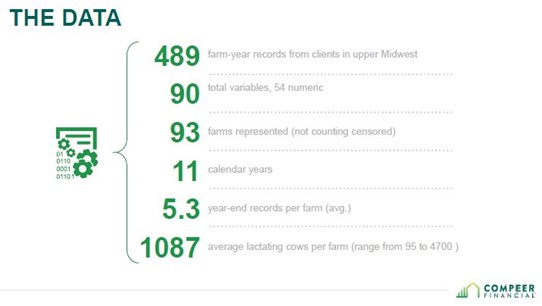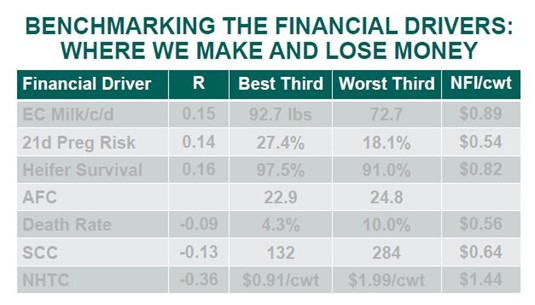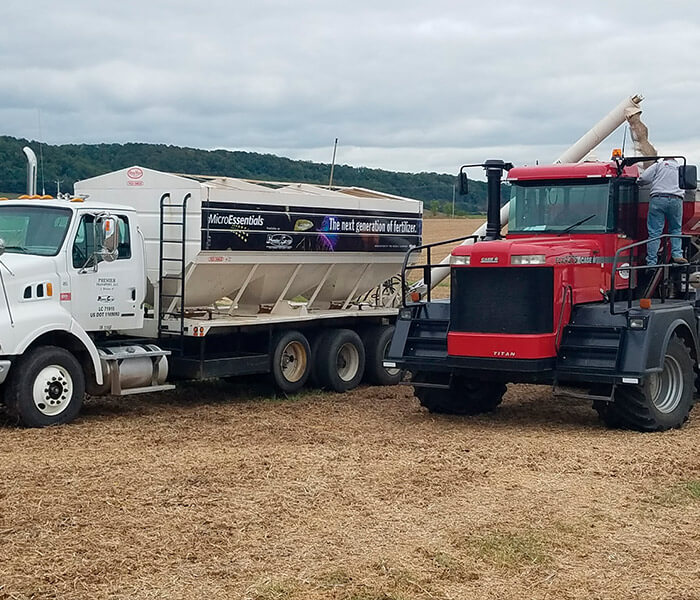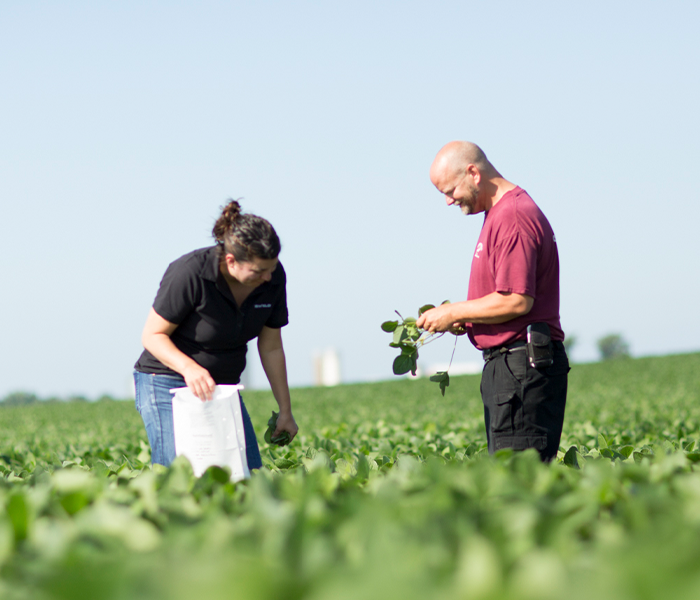What Drives Financial Success?
There is no question that the state of the dairy industry, as it has been since my time began at Premier in 2017, has been nothing short of a rollercoaster ride. While there are plenty of moving parts not in a consultant’s or producer’s control, there are still several ways to improve profitability on our dairies today.
Compeer Financial is a major provider of Agricultural lending and financial consulting services in the upper Midwest. A couple of years ago our team came across a presentation that a group of dairy consultants from Compeer Financial put together. Compeer’s goal was to use data from their current clientele to identify specific measurements that are correlated with the financial health of the dairy. The data was collected from the farms represented in Table 1. NFI/cwt in Table 2 represents the net farm income/cwt energy corrected milk between the best third and lowest third in their study.


The first financial driver on Table 2 shows us that Energy Corrected Milk/Cow/Day was amongst the highest correlation for profitability on the dairy. The top third of the dairies came in at 92.7 pounds/cow, whereas the bottom third came in at 72.7 pounds/cow.
One way to get more milk per cow is to improve the pregnancy rate and reduce the days in milk across the herd, with the top third of herds coming in at a 27.4% pregnancy rate.
Heifer survival and overall management is essential, as raising replacements is one of the largest expenses on the dairy.
As Death Rate, Somatic Cell Count, and Net Herd Turnover Cost increased, profitability went down. Based on Compeer data, for every 100,000 increase in SCC, milk production decreases 5.5 pounds.
All in all, Compeer did a nice job of benchmarking these key financial drivers on the dairy. We can only manage what we measure. When was the last time your dairy took a hard look at each of these key areas? At Premier Cooperative, our nutrition team can offer an array of services. Whether it be benchmarking your calf and heifer program or analyzing herd records for performance and potential improvements, we would be glad to help in any way we can.
Amber Yager
Nutrition Consultant






